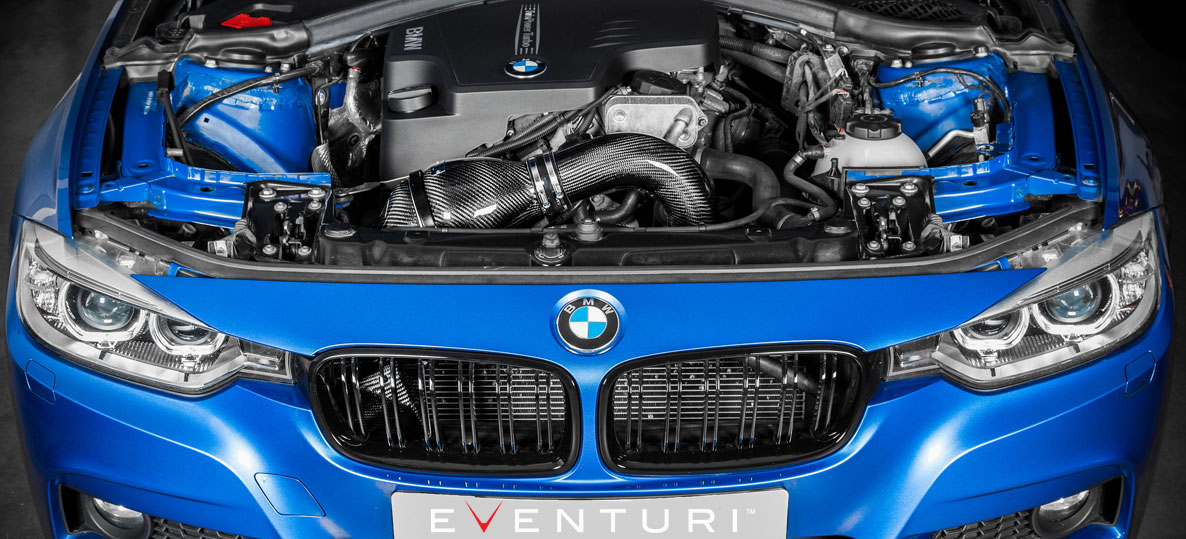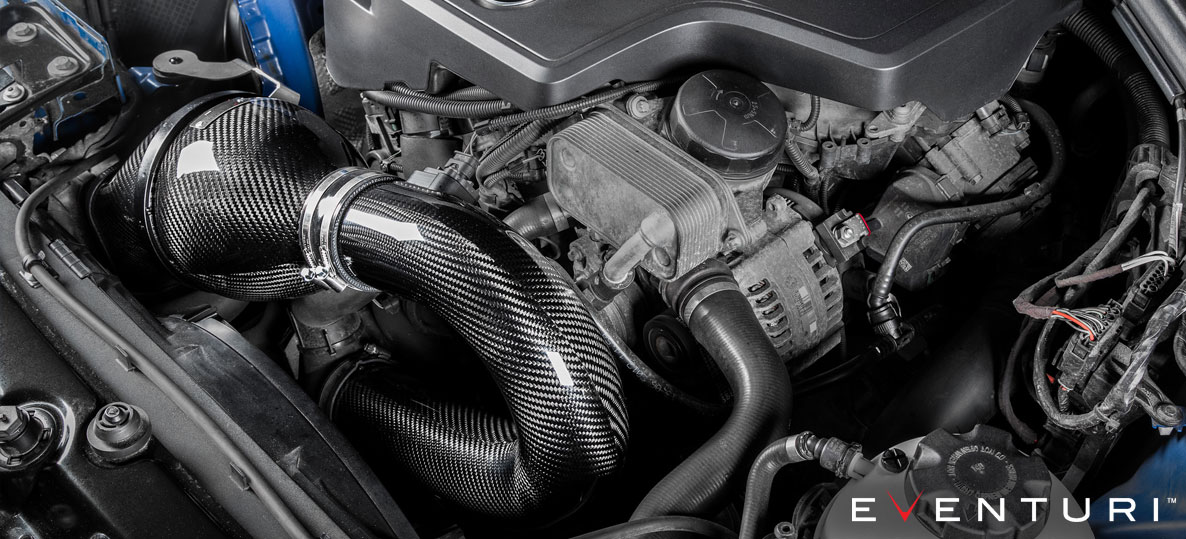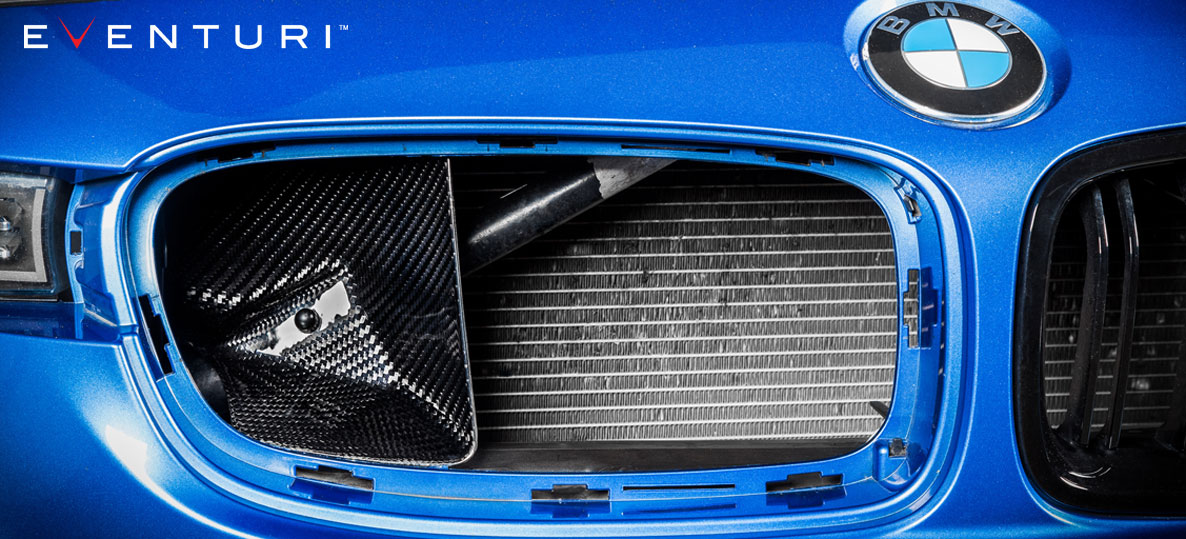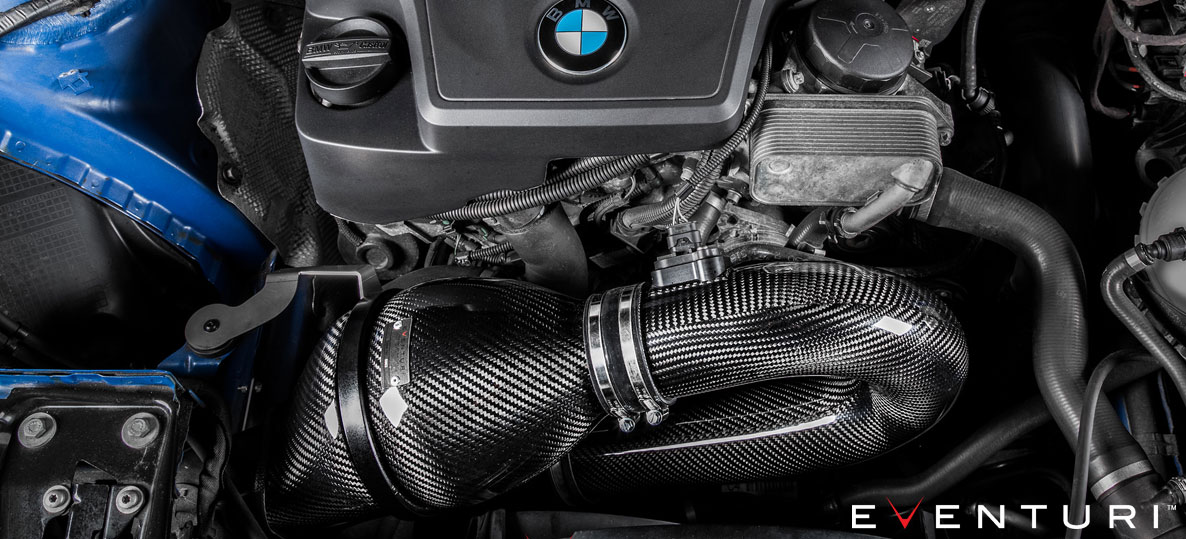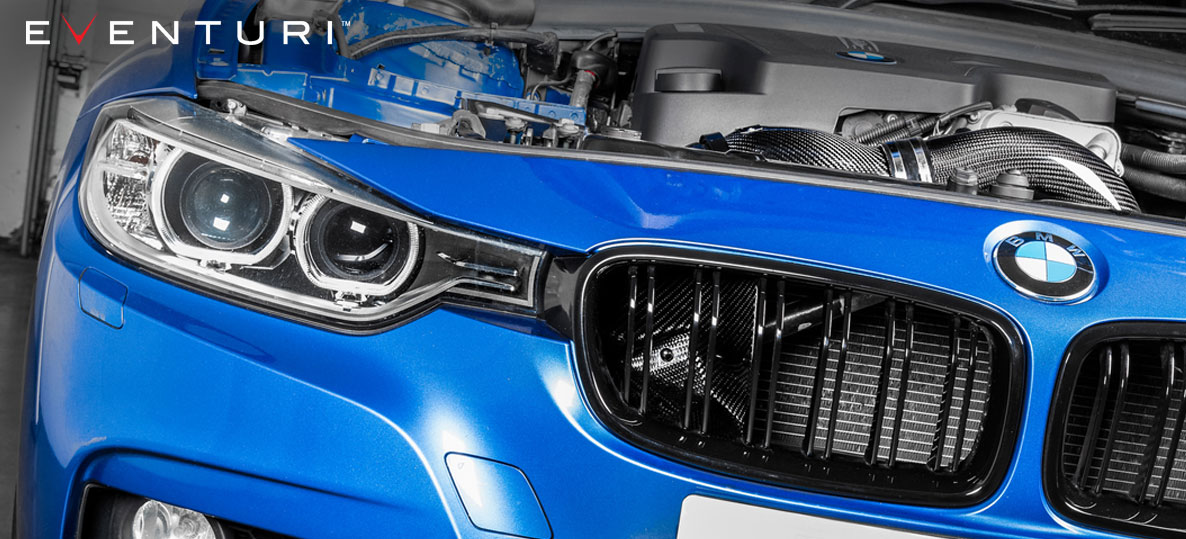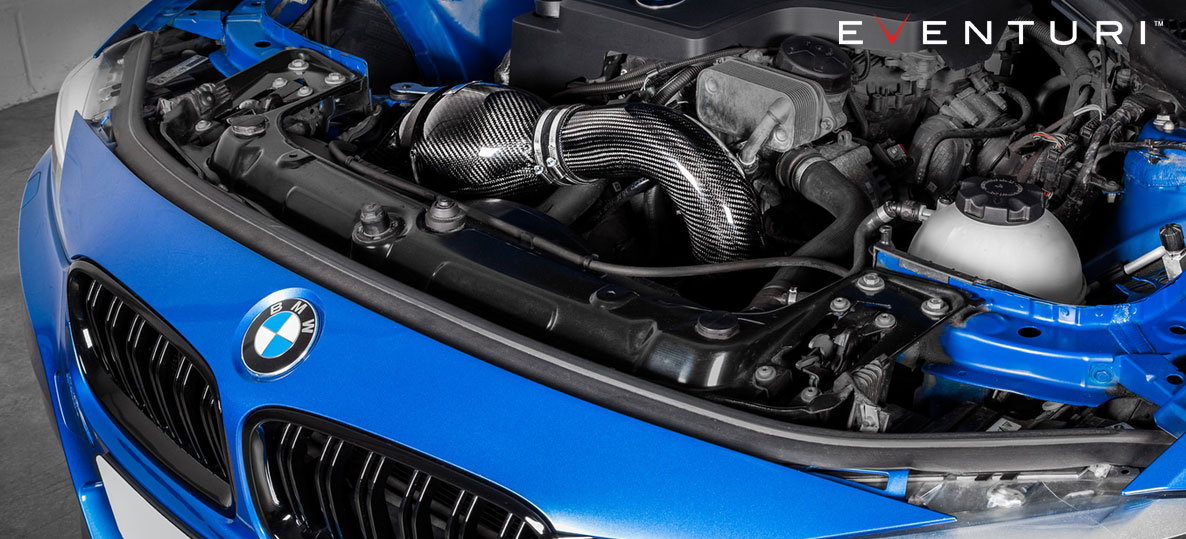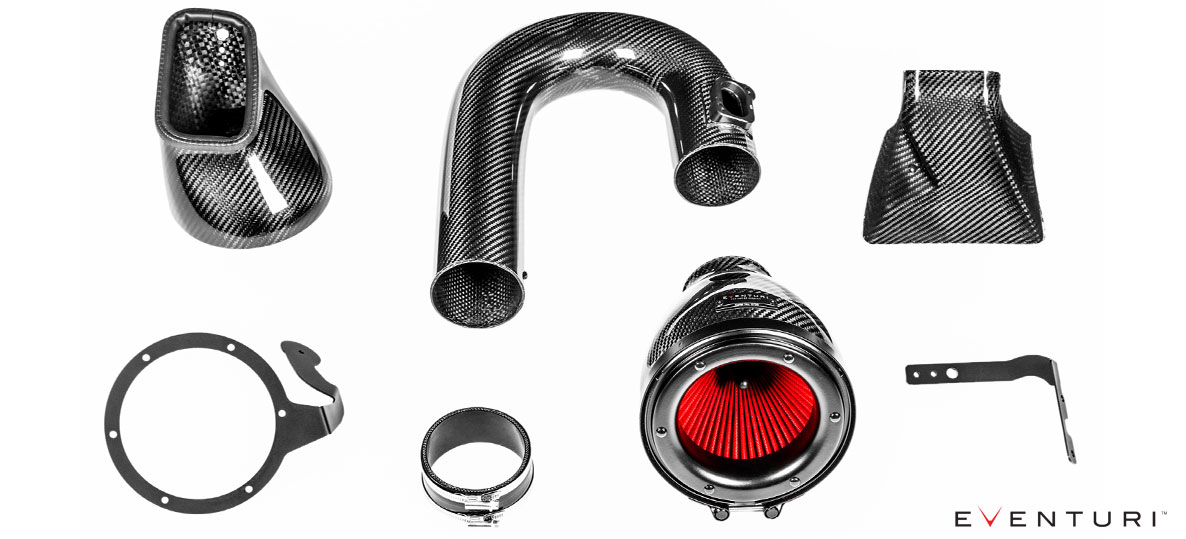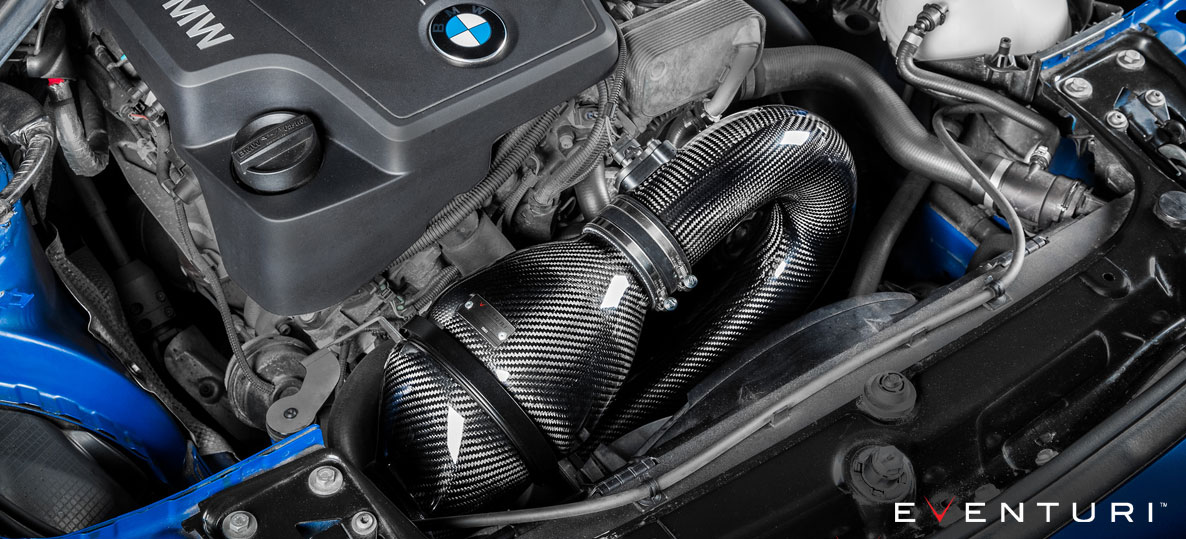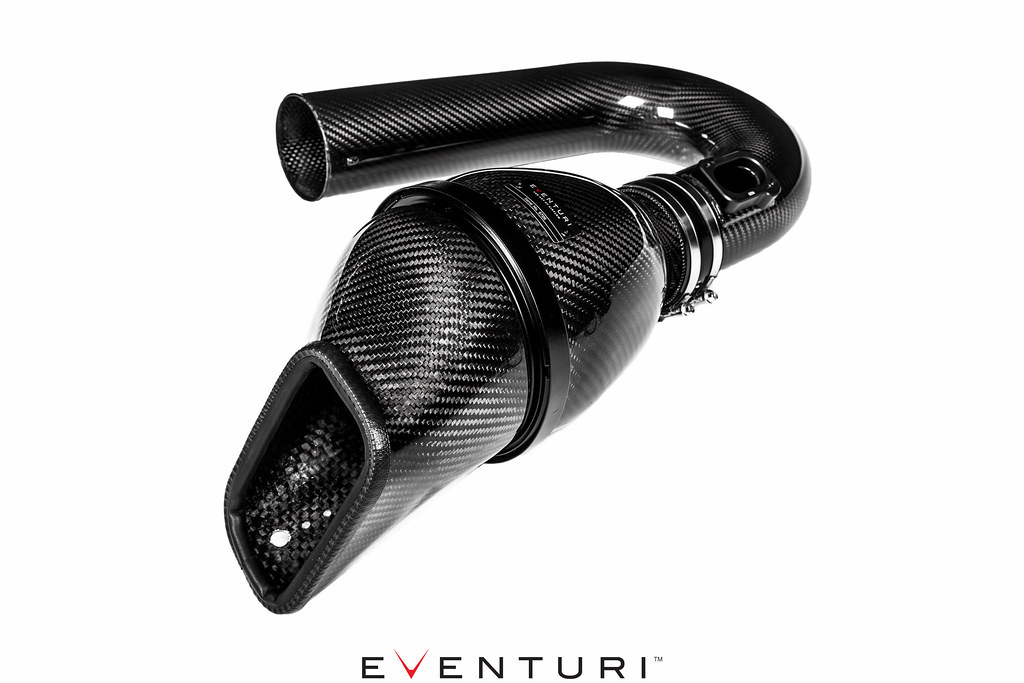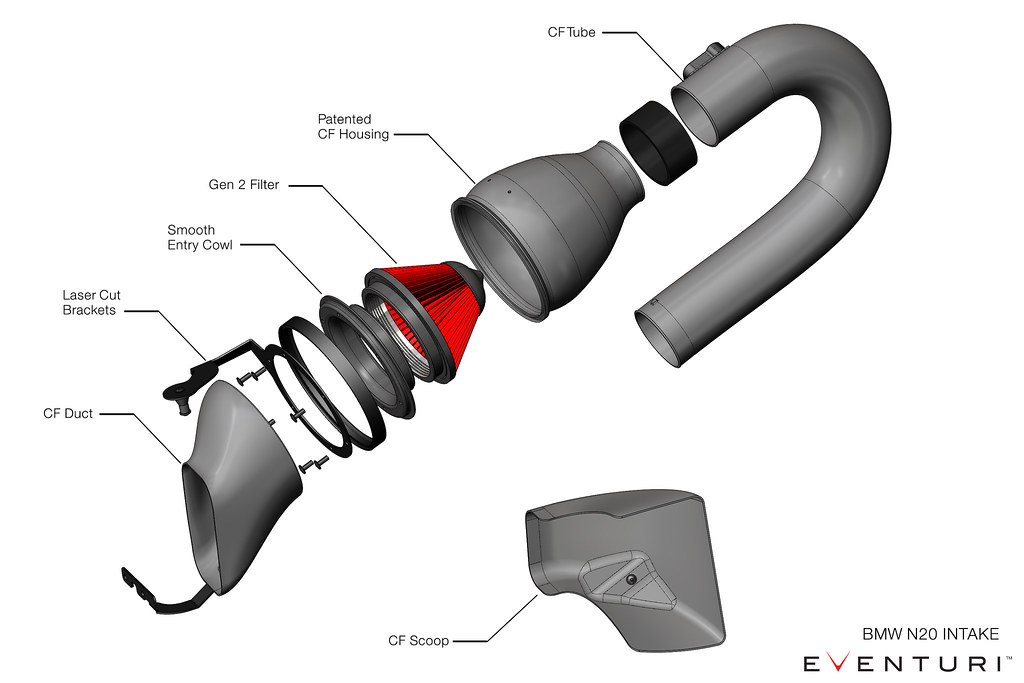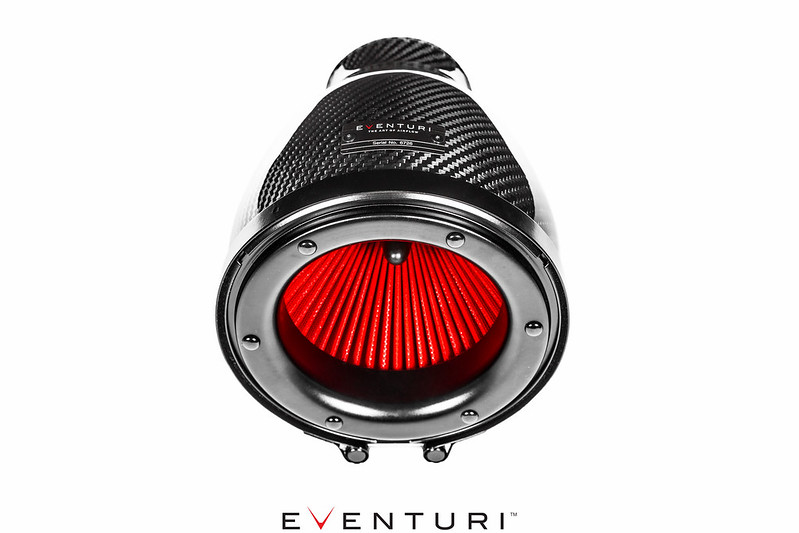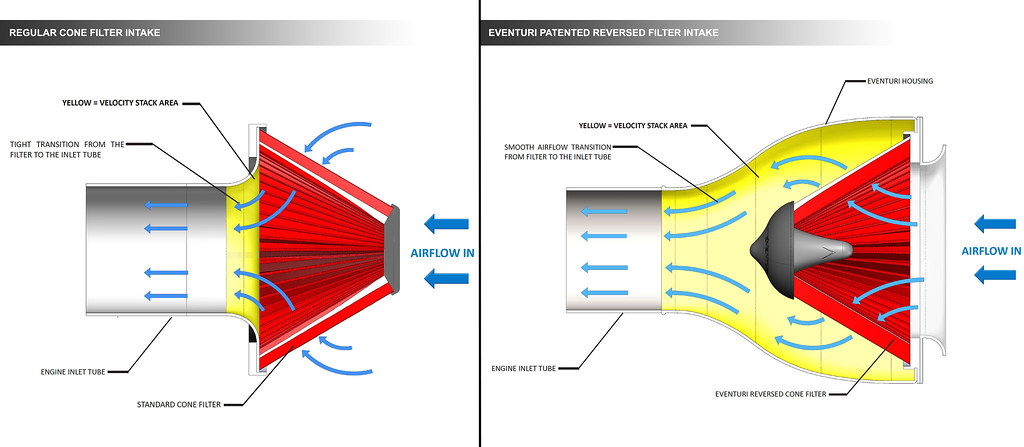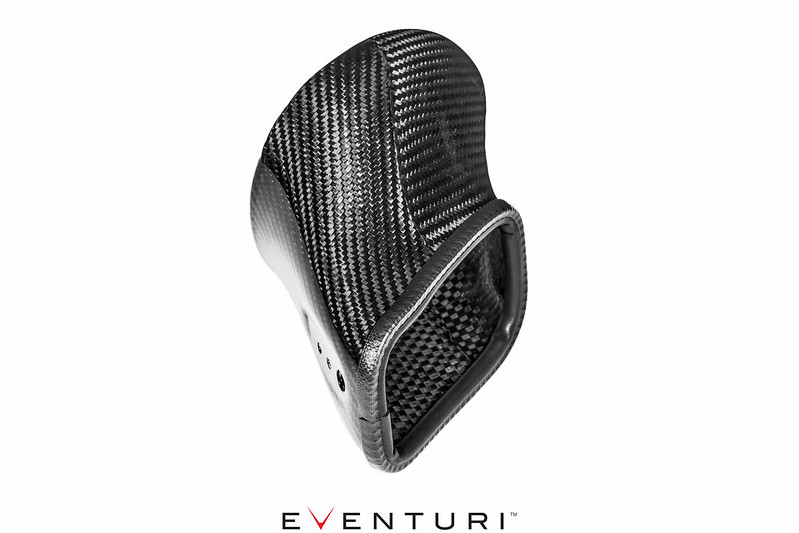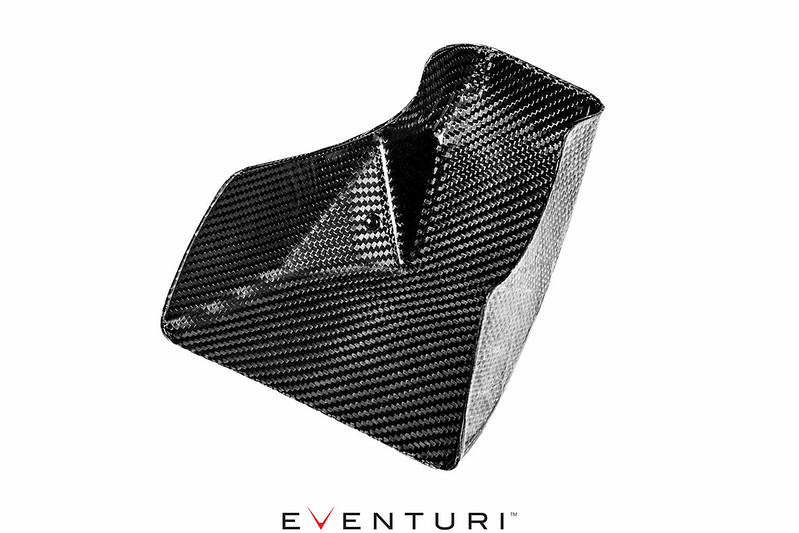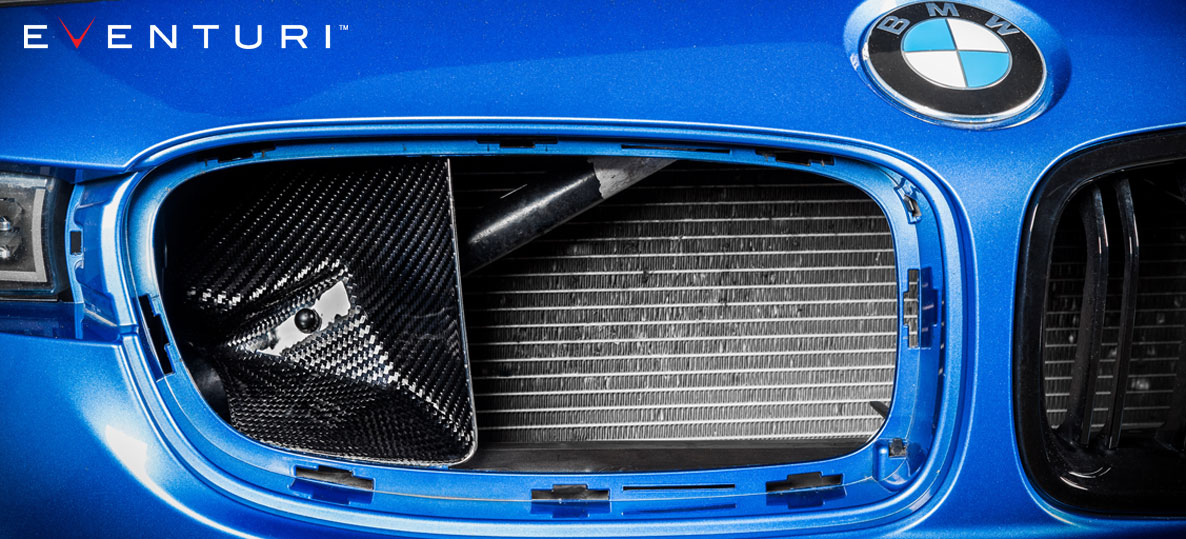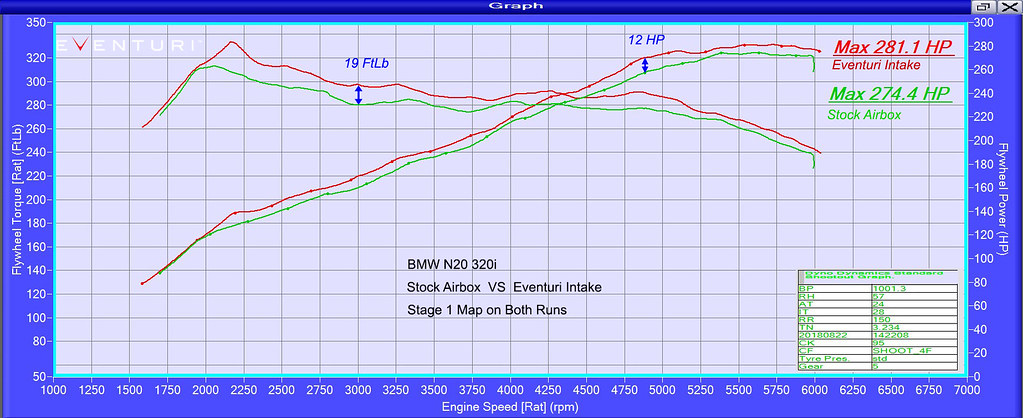Performance Increase : 7-12hp, 10-19ft-lb
The N20 Eventuri intake system is another example of our “Complete System” principal. It is a fully sealed system which ensures that the turbo does not draw hot air from the engine bay. To further improve on the intake temperatures, we added a front scoop which forces air into the stock duct and feeds the intake system when the car is in motion. This combination of a sealed system with an air scoop results in lower intake temperatures than the stock airbox. To ensure the smoothest flow possible we use our Patented filter housing coupled with an intake tube which replaces the stock tube. The stock tube has a sound dampening chamber which causes turbulence – our carbon tube replaces this and allows for unrestricted flow to the turbo.
The Eventuri Difference
The N20 Eventuri system uses our Patented Carbon fibre Housing which provides an aerodynamically efficient airflow path from the filter to the turbo. Not just another cone filter with a heat shield but a unique design which invokes the Venturi affect and maintains laminar flow conditions to reduce the drag on the turbo.

